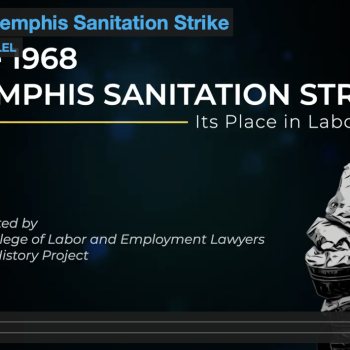Megan Rapinoe, in her now famous speech in New York after winning the World Cup, included this call to action: “This is my charge to everyone. We have to be better. We have to love more, hate less. We got to listen more, and talk less. We got to know this is everybody’s responsibility, every single person here. Every single person who is not here. Every single person who doesn’t want to be here. Every single person who agrees and doesn’t agree… There’s been so much contention in these last years. I’ve been a victim of that. I’ve been a perpetrator of that…but it’s time to come together.”
The week following, Donald Trump initiated a national feud with a series of racist tweets in which he told congresswomen they should go back to their home countries.
This is the nation we live in, and the tenor of our discourse. Clearly, we do indeed need resources as preachers for “ministry in the red-blue divide.”
Enter Leah Schade. Schade’s first book, Creation-Crisis Preaching: Ecology, Theology and the Pulpit already positioned her as one familiar with purple preaching. Preaching on climate change means wading (literally) directly into the purple. Readers have grown to trust her wisdom in bringing difficult topics into the pulpit.
Now with her new book, Preaching In The Purple Zone, Schade continues to take the issue head-on. Intriguingly, although the title of the book focuses on preaching in the purple zone—implying the focus would be on getting beyond partisan politics—the real center of her work is examining a more dialogical approach to preaching itself.
Many readers of this magazine are likely familiar with the very popular, and widely practiced, inductive approach to preaching popularized by authors like Fred Craddock and Barbara Brown Taylor. Inductive preaching is a dialectical way to bring listeners along on the journey of discovery the preacher has been on in their engagement with the biblical text. In this sense, it attends to the movement between speaker and listener.
However, Schade points out this inductive method—sometimes called the New Homiletic—still privileges the preacher’s insights over that of the assembly.
So Schade introduces us to the theory of new homileticians who propose forms of conversational preaching. Then she introduces us, over the course of the rest of the book, to her sermon-dialogue-sermonmodel, with case studies, model sermons, and even an appendix of resources to announce and support the deliberative dialogueshe proposes.
It’s helpful to know the basic model. In its simplest form, the preacher first preaches a prophetic invitation to dialogue. Rather than simply launch into antagonistic propheticism, which Schade argues fails typically to get the response desired, the preacher begins by opening space for dialogue around a difficult topic. This sermon has a series of prescribed steps: point out the dialogical aspects of a specific biblical text; determine what’s at stake; identify the values; explain how God, Jesus, and/or the Holy Spirit is active; recognize what the dialogue is teaching; suggest possible next steps.
After this first sermon, the congregation schedules a deliberative dialogue. This session, anywhere from 90 minutes to a few hours in length, itself has a specific structure to it: introduce the topic; establish ground rules; share how this issue impacts you personally; evaluate the pros and cons, consequences and benefits of possible approaches to complex problems (often three options); reflect on the pros and cons of these options to identify common themes and shared values; suggest and discuss next steps for taking action.
The preacher, having participated in this deliberative dialogue with the community, then returns to the pulpit the following Sunday and preaches a second sermon, one drawing on the process of dialogue that has taken place, and is continuing to take place, in community. This second sermon may still be prophetic in the sense that it expresses “unrelenting hope about God’s activity to transform church and society in a present-future sense based on the principle of justice” (120). But the sermon-dialogue-sermonmodel makes use of the preacher’s “unique position and opportunity to model a dialogical approach to a contentious issue while also examining it through the lens of the gospel” (121).
Schade was first inspired to develop this model for preaching after conducting a 1200 person survey of clergy. Her research led her to the conclusion that many pastors do not feel trained or prepared to preach in the “purple zone.” So they simply avoid controversial issues altogether, both because of the inherent risks involved, and because many doubted whether it would make a difference in the life of their congregation.
There are many strengths to Schade’s proposal, not least because of its unerring commitment to deepening what was started in the New Homiletic, a real attention to the hearers of sermons, but now also with a more round-table approach that brings the whole people of God more fully into the preaching task.
Nevertheless, it does raise the participation bar significantly. Given most congregations are not regularly in the habit of gathering midweek to discuss contentious issues, one might wonder how realistic the proposal is.
But then, all calls to unity, like the one from Megan Rapinoe, raise the bar. When we hear calls to come together, take responsibility, listen more, be better, we then ask, “How?” Schade meticulously lays out the details of the how, puts them into practice, and offers examples of how it all goes down.
In this sense, even if it is difficult, Leah Schade has given us a clear path to love more, hate less, and together be a living sermon that prophetically emerges not by avoiding life in the purple zone, but by directly engaging it.
—
This review appears in the most recent issue of The Christian Century.











